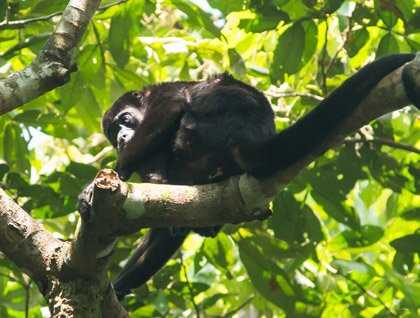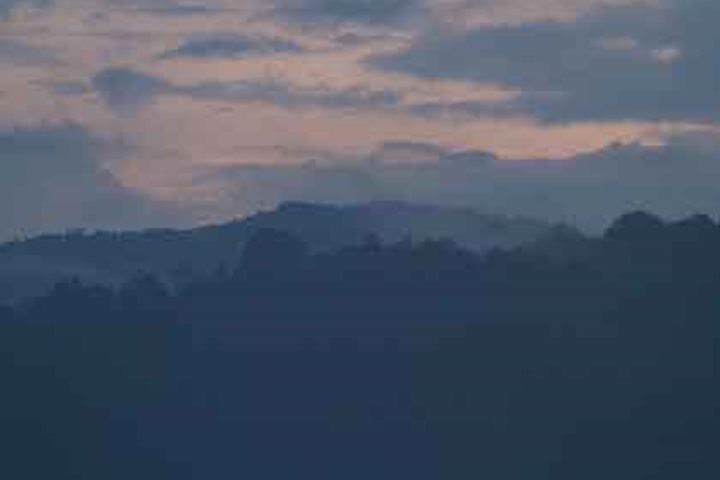After our evening transit of the first set of locks of the Panama Canal, complete with a stunning view of the total lunar eclipse, we began our morning at anchor in Lago Gatûn. Once the largest manmade lake, created to supply the fresh water that drives the incredible engineering of the canal, Lago Gatûn sits roughly 88 feet above the sea level of the Caribbean Sea. Very few passenger vessels are permitted to anchor here and disembark to explore the area. The isthmus of Panama from a geographic and biologic perspective harbors an incredible amount of biodiversity as well as a rich heritage historically from the Conquistadors of Spanish domination of the Americas to the critical feet of engineering that is the Panama Canal. Today we will be able to experience many components of these gems of Panama.
Our ships complement would split into three parties for the day’s explorations. Some of the more significant historical sites connected to early Spanish control of the region were the focus. Fort San Lorenzo, a UNESCO World Heritage site, built to defend the mouth of Chagres River on the Caribbean coast. Portobelo, another UNESCO site, was first named by Christopher Columbus in 1502 and along with San Lorenzo was crucial in the Spanish hold on the region. An active port for shipping and handling the massive amounts of gold coming from South America to Europe. Both of these sites were once taken buy Henry Morgan and his band of corsairs and buccaneers between 1868-70. Subsequently they were both retaken by the Spanish.
From this author’s perspective the biodiversity and significant amount of primary forest preserved around the basin of Lago Gatûn is truly remarkable. This extensive forest ecosystem only survives today because of the presence of the Canal and its ever growing need for fresh water. The hillsides are covered in thick rain forest where the annual precipitation of over 200 inches runs down and fills the lake. It is here in the Soberania National Park that we would spend our day hiking through the forest and looking for some of the nearly 400 species of birds that can be seen here. How remarkable to step out of the blistering sunshine and under the canopy of this rich forest ecosystem. Walking a forest track and listening to dozens of species singing and calling picking out the movement of these forest dwellers can be difficult, but with our local expert guide Hernan we managed to see or hear over 70 species birds. The calls of black howler monkeys could be heard all day in the distance, and we even got great looks at a small troop that crossed through the canopy. A true highlight for the group was being able to observe at close range and in near plain view a flock of ant attendant bird species. The abundance of ants, in this case leaf cutter ants, in the tropics has driving the evolution of scores of species of birds specialized in foraging on ant swarms. In this particular flock there were five main species feeding on the ants including; red-throated ant-tanager, black-faced antthrush, bicolored and spotted antbird, and grey-headed tanager, all taking there place in the roll of ant predator. Lastly near the end of our observation a small group of us hung back to photograph and further watch this spectacle when movement of a largish bird caught our eye, it was a great tinamou. More often heard than seen this primitive-looking ground dweller was in plain sight in the openings of the ground cover and casually waltzed along picking off ants as it went. Within the forest a short trail led us to the canopy tower, with its winding stairs leading us 130 feet to peer over the extensive canopy of this lush and vital ecosystem. Another highlights included being able to watch several species of hummingbirds coming and going from a feeding station in the forest. Last but not least we all got an incredible look at a male red-capped manakin. This little black bird has a fire red cap that glows in the filtered light of the forest and the most striking yellow cuffs around its legs and it sat still for a few moments for us to gaze at it.
All of our groups were able to visit and get a view of the Panama Canal expansion project. This new engineering marvel underway is near completion and should be able to accommodate the new massive ships that can no longer travel the 100-year-old Panama Canal. This site was most impressive and hard to fathom that the old Canal was built without the use of today’s technology.






